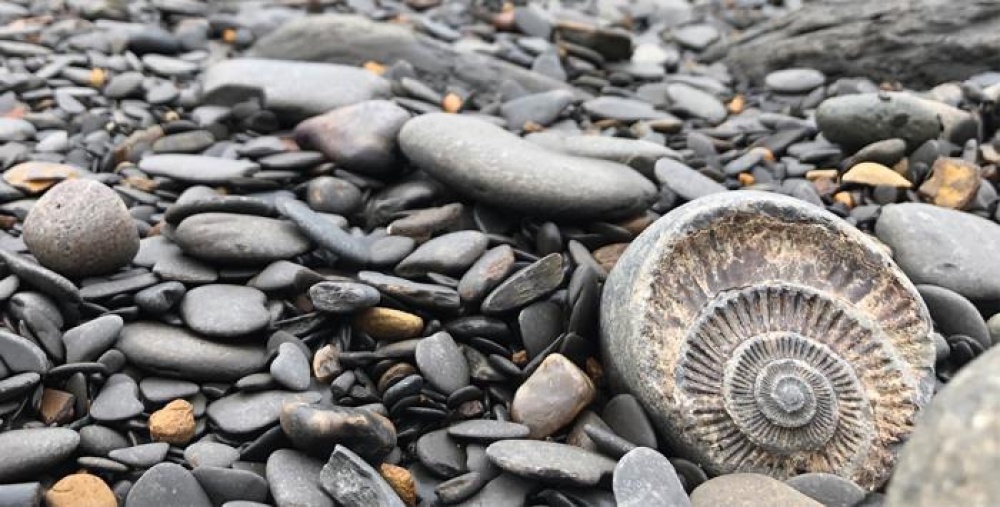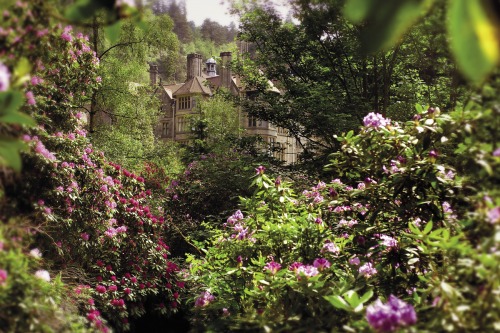Discovering the Rarest and Most Remarkable Fossils in Yorkshire

While, for many of us, hitting the beach means soaking up some sun in the summer months, one family in Yorkshire are uncovering some of the rarest and most remarkable complete fossils in the country – and winter certainly won’t be slowing them down
Mark, Helen, Aaron and Shae Smith – collectively known as Yorkshire Fossils – lay claim to the largest collection of fossils in the county. Having first started fossil hunting to facilitate some family bonding while dad Mark enjoyed some fishing along the coast, now come rain or shine, Yorkshire Fossils scour the shoreline – unearthing natural treasures that have been buried deep inside cliffs and under shale for millions of years.
‘I like looking for them purely because the fossils we’re finding are really rare,’ says Aaron Smith, the eldest son and content co-ordinator of Yorkshire Fossil’s Instagram page. ‘I might not find something decent for six months, yet I’ll still go out looking every week, just in case. It’s that constant anticipation: you never know what you’re going to find next. There are lots of people looking for them, so you have to be on top of the competition as they’re very highly sought after. But everyone is interested in dinosaurs as a kid, so I guess I can live out that dream now – it’s real and its exciting.’
The fossils unearthed by the family are certainly rare. From Nautilus specimens (a relative of the squid, octopus and cuttlefish, still alive today) preserved in Iron Pyrite from the deep Jurassic ocean around 185 million years ago, to a completely articulated Ichthyosaur flipper from the Bituminous Shales (a giant marine reptile that ruled the sea some 250 million years ago) which has remained entirely intact, despite the fact that its tiny bones – effectively equivalent to our finger digits – almost always detach and fall apart prior to fossilisation, the finds uncovered by Yorkshire Fossils are phenomenal.
‘We’ve got a few really interesting ones, like Ichthyosaurs whose stomach contents have been preserved – so there are little fish parts still in the stomach,’ says Aaron. ‘We’ve also got an Ichthyosaur, it’s about 8ft long, and it looks like there are possibly foetuses inside the abdomen which, I think, would be a first for the UK, if that turned out to be the case.’
A particular favourite of their 62,000 Instagram followers are the Eleganticeras ammonites found inside beautifully smooth, golden limestone nodules: affectionately known by the family as ‘Golden Cannon Balls’. Alive during the Jurassic and Cretaceous periods (a time interval of about 140 million years) ammonites were marine animals with a coiled shell, somewhat akin to today’s molluscs, and their fossils are often not even visible to the naked eye – with only years of fossil-hunting experience leading Aaron and his dad to break open what, to anyone else, look merely like slabs of rock, to unearth these gleaming mirror balls.
‘Sometimes you find a rock where there’s nothing showing on the outside, and you have to break it open just to see if it is actually a fossil,’ explains Aaron. ‘There might be a fossil squid inside, or a lobster, or a vertebrate, you never know. It’s always quite exciting when you break it open and get a surprise. It’s basically a very old Kinder egg!’
Although now living in the North East while he studies Medicine at Newcastle University, Aaron and his family have discovered all of their unique finds along the Yorkshire coast. Particularly focused in the north of the county, Saltwick Bay, Sandsend Beach and Port Mulgrave are some of Yorkshire Fossils’ favourite spots, and have all offered up truly remarkable specimens. So what is it that makes this part of the country so special for fossil hunting?
‘The actual geology that’s exposed is the main reason,’ explains Aaron. ‘You’ve got all of the upper layers, middle layers and low layers of the upper Jurassic period. And the cliffs here are so high, so you’ve got so much potential for cliff falls.
‘Yorkshire was first noticed for its fossils when they did the Allam mining; nearly 300 years ago, they mined off a part of the cliff called Allam Shales to extract a substance that kept the dye in clothes. While they were mining for Allam, they found lots of marine reptiles preserved in it. Ever since then, Yorkshire has had a good reputation for finding fossils. The vast majority of specimens you’ll see – whether in museums in this area or elsewhere, including the Natural History Museum in London – almost all are from the Allam Shales.
‘What is unique to this coast are the fossil crocodiles that you can find, very rarely, of course, but they’re almost exclusive to Yorkshire. We’ve certainly got the best fossilised crocodile, as far as I’m aware, that’s been found in the past 150 years in the UK.’
An entire skeleton (minus the tail), Yorkshire Fossils’ crocodile – nicknamed Snapper – is around 5ft long, and is the first full specimen of its kind to be preserved and articulated since the Natural History Museum acquired the ‘Melksham Monster’ in 1875. But the family’s fantastic discovery was not unearthed by a mere matter of luck: it is the reward of countless hours scouring the coastline over the last 12 years.
‘What you have to remember is that, for a lot of these fossils, you don’t just go down to the beach and find a perfect specimen,’ reasons Aaron. ‘You find a slab of rock, and only sometimes can you see round the edges that there is actually something inside. You’ve got to know what to look for a lot of the time. Normally my Dad has to go in with all his tools to fully expose each specimen. So it’s through nothing but hard work that we’ve got to where we are. Hundreds and thousands of hours have gone into our collection, it’s not been an easy task.’
The historical wealth and rarity of a lot of their collection has meant that Yorkshire Fossils’ specimens are attracting the attention of fossil hunters across the country; starting to be published in books, ITV’s Dean Lomax is also set to visit the family to document their finds. And with all of the fossils shown on their Instagram page kept in their own collection – the family having not yet donated their discoveries to museums – Aaron harbours the dream of opening his own exhibition space one day. But with the reality of that still a few years off, for now Yorkshire Fossils remain focused on sharing the joy of their remarkable discoveries with their online followers.
‘I just absolutely love going out to the beach and finding fossils,’ says Aaron. ‘It’s great for relieving stress. And through Instagram, I’ve inspired quite a few people to get out and start enjoying the beaches here too. I get quite a lot of messages from people asking questions or even telling me how I’ve improved their lives! It’s amazing.’
For more information about Yorkshire Fossils, visit their Instagram page at: www.instagram.com/yorkshire.fossils
Happy Hunting Ground
Aaron shares his top tips for those of us wanting to start fossil hunting ourselves
What do you need to know?
‘The first thing I always say to people is stay away from the cliffs. But in terms of actually getting into the hobby, you can easily get yourself a little handbook of fossils that you can find in Yorkshire and have a quick skim through that so you know what you’re looking for. You need a little hammer to chip through the rocks that you’ll find. You’ll need grippy walking boots, because quite often the slate is really slippy, and a rucksack to put your finds in. There’s not much to it really, you’ve just got to go out and get looking. You’ll always find something.’
What should you look out for?
‘It depends. If you’re looking for ammonites, the general rock you want to look for is usually oval or spherical shaped, and when I say ‘rock’ it’s not slate, it’s a limestone rock. Around the edge of the rock, you’ll generally see part of the fossil – you might see some of the ribs of the ammonite coiling around the edge of the rock, for example. Sometimes you might just find a rock where nothing’s showing on the outside though, so you’ll have to break it anyway just to see what’s inside.’
Where are the best spots in Yorkshire for fossil hunting?
‘Saltwick Bay is very popular, just next to Whitby. Port Mulgrave is also popular at the moment. A lot of people have heard of Robin’s Hood Bay for fossil hunting, but that’s not great for fossils in my opinion. I guess it depends on what you’re looking for; if you’re just looking for fossil shells, you can find hundreds of those, but if you’re looking for ammonites, or anything other than a shell, you’re going to struggle.’







